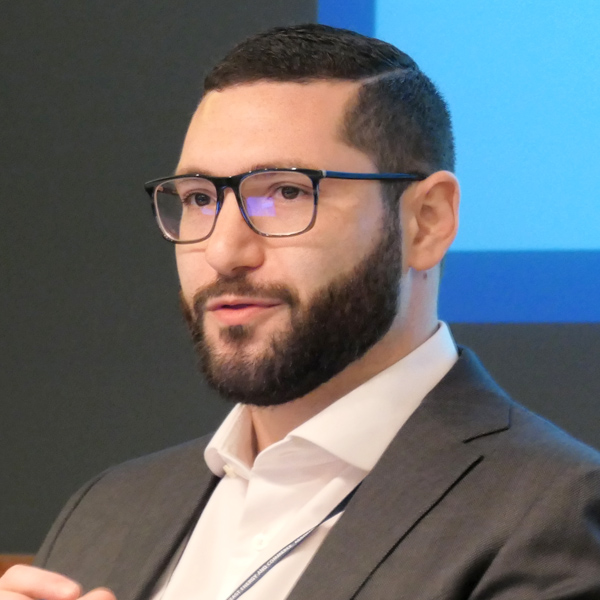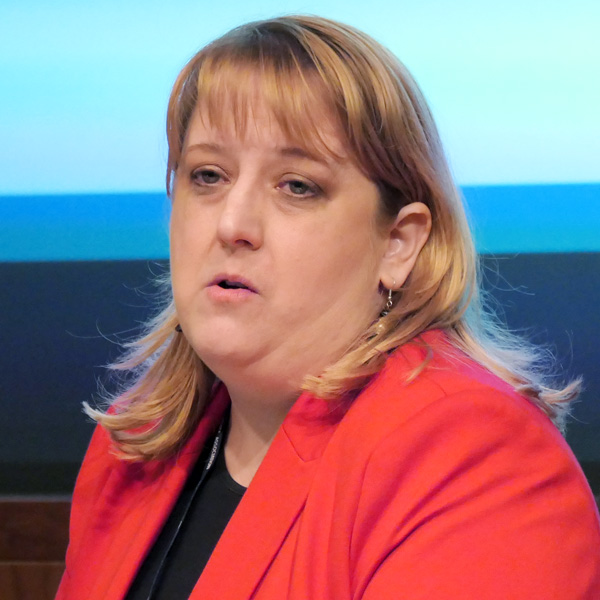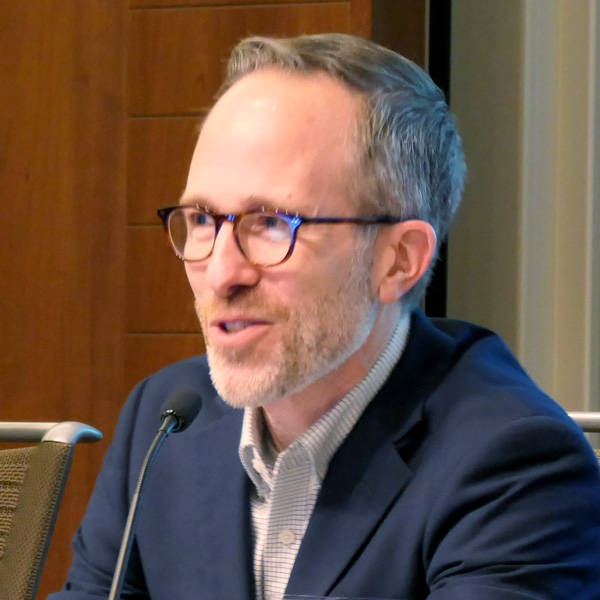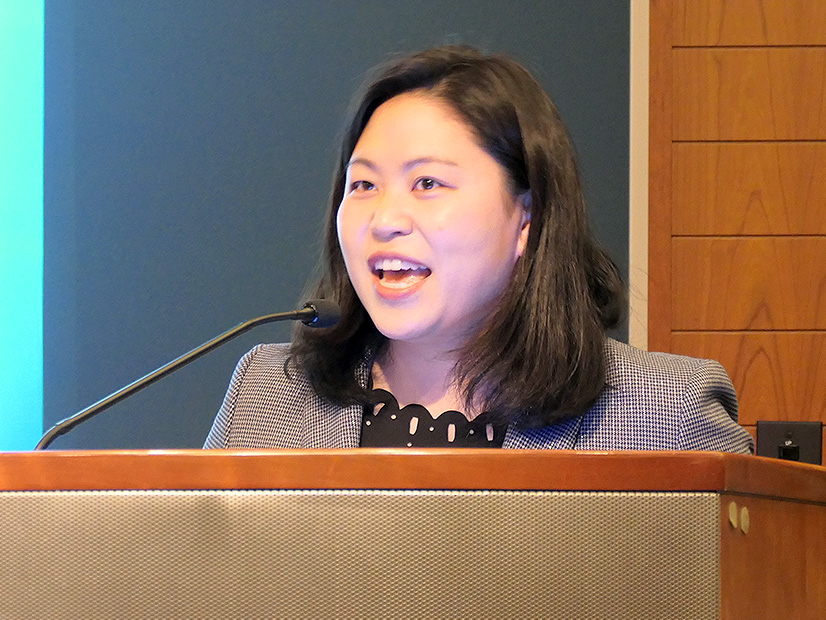WALTHAM, Mass. — Maria Robinson, director of the U.S. Department of Energy’s Grid Deployment Office, gave an update last week on the work her team has been doing since the office’s launch last year.
Speaking at the Northeast Energy and Commerce Association’s Renewable Energy Conference, held March 9 at the Waltham Woods Conference Center, Robinson painted a picture of a department that’s hard at work looking for the country’s biggest grid challenges and ways to solve them.
The office is working to allocate a great deal of funding from the Infrastructure Investment and Jobs Act, according to Robinson.
“We’re seeing so much funding flowing to areas that are in desperate need of economic recovery and ensuring that they are being … rebuilt at least back to 21st century standards,” she said.
The office is also getting down to business on transmission permitting, and she noted that the Northeast has plenty of practice at dealing with the complexities and politics.
“Here in New England we have experience with individual communities interacting with transmission lines a little differently than others might,” she said.
But she also gave a shoutout to the region’s collaborative memorandum of understanding on offshore wind. (See New England States Group Up To Push For Federal Transmission Funding.) The states are looking to win federal funding from the Grid Resilience and Innovation Partnerships (GRIP) Program.
“That’s the type of exciting innovative project that we’re thrilled to see applying,” Robinson said.
 Amit Barnir, vice president of U.S. network infrastructure at Zenobe | © RTO Insider LLC
Amit Barnir, vice president of U.S. network infrastructure at Zenobe | © RTO Insider LLCRobinson gave one other key update last week, on the process of preparing to work on projects in National Interest Electric Transmission Corridors (NIETC). She said the triennial state-of-the-grid study is a precursor to the NIETC work. The draft version of the study is out for comment now and will be finalized by November.
“At that point in time, our hope is to be able to start opening up for potential applications for those corridors,” Robinson said. “We’ve already heard a lot of interest from private developers, who are more than ready to start that application process.”
State of Renewables in the Northeast
Another panel at the conference discussed the opportunities and challenges for different types of renewables in the Northeast.
Every panelist agreed that there is a lot of promise for nearly every clean technology in the region.
 Katie Theoharides, head of U.S. Offshore East for RWE Renewables | © RTO Insider LLC
Katie Theoharides, head of U.S. Offshore East for RWE Renewables | © RTO Insider LLC“The signs are great. There’s a lot of activity from a jobs perspective. I would characterize it as an exciting time to be in solar,” said Mark Sylvia, chief of staff at BlueWave Solar. “When you think about the Northeast and what’s been accomplished over a very short time, we have a really good story to tell.”
Amit Barnir, vice president of U.S. network infrastructure for storage developer Zenobe, agreed.
“The Northeast is interesting because we’re finding market-based solutions for energy storage,” he said.
And in offshore wind, Northeastern projects have been setting the bar in what is largely a “homegrown industry,” said Katie Theoharides, head of U.S. offshore in the Eastern U.S. for RWE renewables.
“We also have a workforce which is building up and ready to go, and the federal government has come in line and set bold targets as well as releasing historic lease areas in rapid succession,” she said.
 Nickie Collard-Andrade, Avangrid | © RTO Insider LLC
Nickie Collard-Andrade, Avangrid | © RTO Insider LLCThe workforce development piece is key to the success of offshore wind, said Nickie Collard-Andrade, a senior workforce development coordinator at Avangrid.
“Even in the short time I’ve been involved, things have changed dramatically, specifically in workforce development. When I started, it was hard to get people to buy in that it was really happening. The dynamic has changed, and there are more individuals contacting us,” she said.
But there are headwinds for each segment of the Northeast’s clean energy industry too. Most of them have to do with interconnection, the grid and regulation.
“The general approach in the Northeast has started with utilizing existing rules, both wholesale interconnection tariffs and retail tariffs,” Barnir said. “The challenge that we have run into is that energy storage is not just generation; it’s load as well. The rules that are in place kind of only look at it in one direction.”
 Mark Sylvia, chief of staff at BlueWave Solar | © RTO Insider LLC
Mark Sylvia, chief of staff at BlueWave Solar | © RTO Insider LLCSylvia offered a similar perspective for solar.
“Chief among the challenges we face is the grid and the interconnection process. There’s a misalignment between these very aggressive goals governors have set in their states and where we are in upgrading the grid,” he said.
For wind, political and personal views of the technology are an obstacle.
“There are a lot of fears about new technology. How do we make it something that’s approachable and highlights the benefits?” Theoharides said.
She suggested building more political support by bringing oil and gas resources from the Gulf Coast to bear on the Northeast’s offshore wind efforts.

